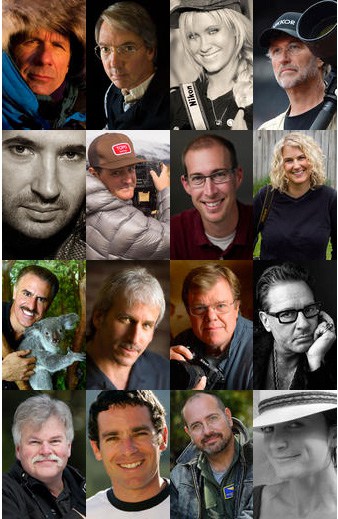Share
Photography’s Old White Guy Problem
Photographer Daniel Shea recently penned an op/ed on sexism in editorial photography that generated an important discussion about women in photogr...

Photographer Daniel Shea recently penned an op/ed on sexism in editorial photography that generated an important discussion about women in photography. It is a topic that we’ve thought about for a while at PhotoShelter, especially as it relates to the diversity (or lack thereof) of the photographers who are most often promoted by the industry at large, whether by the photo media or the companies that produce the equipment and gear that we all use. To illustrate the point, here are just a few of those companies and the photographers they’ve selected to represent their brands:
Nikon’s Ambassadors for the United States.
Of the 111 people represented, there are 15 women (13% vs. 50.8% of the US general population), 2 blacks (1.8% vs 13.1% of the US general population), 1 hispanic (0.9% vs 16.9% of the US general population) and no asians (0% vs 5.1% of the US general population).
We have worked with many of these companies, and I can say nothing but good things about the people who manage them and their contributions to the photography industry more broadly. Moreover, they aren’t alone. Many other companies have similar makeups for their ambassador programs.
I also know many of these photographers personally, and I most definitely admire the quality of their work and the exemplary careers they’ve built. There is no question in my mind that these photographers deserve the distinction that these camera companies bestow upon them. On a merit-basis, no reasonable person could question individual selections.
Many of these photographers have been in the business for decades – long before the advent of digital. And I will concede that during the era of film, photography was a white male dominated profession for the most part. So on the one hand, we’re witnessing the aggregation of those “10,000 hourers.” But on the other hand these lists are problematic for that same reason – their homogeneity.
The problem isn’t dissimilar from any other institution that has a racial or gender inequality. Congress is a perfect example. But unlike Congress, where the ability to fundraise is intrinsically tied to winning, the solution to this problem is relatively easy to overcome. Namely, the selection committees of these various companies should simply consider diversification.
But why does it really matter? When we look at a photo, we can’t tell who whether the photographer was a man or woman, white or black, young or old. And if all the photographers are great, and they were selected on merit, what is the problem?
It matters for two reasons. First, homogeneity often becomes subconsciously ingrained within institutions and reinforces stereotypes. (Look at the recent selection of Indian-American Nina Davuluri as Miss America, and the outcry on Twitter questioning her Americanism because she didn’t fit the historical mold.) If diversity is important to an institution, then it often has to try to become diverse – it rarely happens organically without some sort of push. “Old White Male Photographer A” might suggest “Old White Male Photographer B”, and the pattern continues. Even when younger photographers are selected for these programs, we still don’t see much gender and minority representation. Why? Because, again, that would assume that diversity was important in the first place.
Diversity is important because old white guys aren’t representative of the people who are taking pictures today – at the amateur or pro level. The low cost of digital photography has allowed a huge influx of creative talent to experiment and develop. By excluding representation of women and people of color who are making photos, these companies are losing a potential connection to their audience. If you don’t buy the admittedly liberal idea that diversity is important, then perhaps you will agree that the marketing opportunity is tangible and real.
When I was entering the photo industry, I had the opportunity to attend some conferences and see a 20-something Vincent Laforet speak. Seeing his images made me think that I could do it too. His youth connected with me in a way that hearing an older photographer didn’t. The same might be true for a woman or person of color. Vince is now a middle-aged white guy, but I’m still Asian. Seeing the personal work of people like Michael Jang and understanding why and how they photograph is appealing to me. Even more so, no one wants to see the same speakers at every photo conference year after year.
Show me the Scout Tufankjians, Yunghi Kims, Rineke Dijkstras, Donna Ferratos, Ed Ous, Taryn Simons, Cass Birds, Nirrimi Firebraces, Emily Nathans and the Kareem Blacks of the world. Need more inspiration? Erin Patrice O’Brien just created her own great list of women photographers in response to Shea’s blog post.
There will be no calls for boycotts or letter writing campaigns. Let the conversation that’s been happening lately serve as a (re)awakening, a call to be more conscious of who we select to represent our industry. Let them not only reflect those who have been a part of it for decades, but also those who are joining us for the first time — and who represent our industry’s future.





